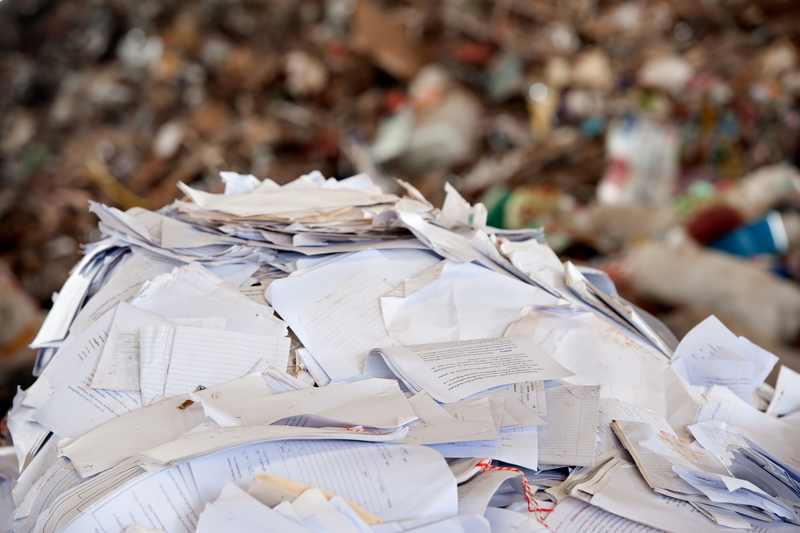Eco-Friendly Upcycling: Give Old Objects a Modern Makeover
Eco-friendly upcycling is more than just a buzzword--it's a creative, sustainable practice that transforms your unwanted items into stunning, functional treasures. Whether you're passionate about zero-waste living or simply wish to add some charm to your home, learning how to give old objects a new life is both rewarding and impactful.
What is Eco-Friendly Upcycling?
Upcycling, also known as creative reuse, refers to the process of transforming discarded or unused objects into something useful, valuable, or beautiful. Unlike traditional recycling, which breaks materials down before repurposing, eco-friendly upcycling rejuvenates items in their current form, preserving their original essence and reducing environmental impact.
- Upcycling breathes new life into old objects, saving them from landfills.
- It often requires minimal energy and resources compared to recycling or manufacturing new items.
- This practice supports sustainable living by minimizing waste and maximizing creativity.

Why Choose Upcycling For a Sustainable Lifestyle?
Adopting eco-friendly upcycling ideas is a win-win for both you and the planet. Here's why:
Environmental Benefits
- Reduces landfill waste: Old furniture, textiles, and containers that would otherwise fill landfills are given a second chance.
- Lowers demand for new resources: Upcycling eliminates the need to consume new materials, preserving natural resources like timber, metal, and plastic.
- Decreases carbon footprint: Less manufacturing means less energy and fuel use, curbing harmful emissions.
Personal and Economic Advantages
- Cost-effective: Upcycling allows you to update your home decor and wardrobes without breaking the bank.
- Unleashes creativity: Embrace your artistic side with DIY projects, customizing items to fit your personal style.
- Builds sentimental value: Upcycled goods carry stories and memories that new products can't replicate.
Getting Started: Principles of Eco-Friendly Upcycling
Ready to give old objects a modern makeover? Here are some guiding principles to help you start your upcycling journey:
- Rethink functionality: Consider how an object could serve a different purpose. For example, can a ladder become a bookshelf?
- Work with quality: Choose sturdy pieces with potential. Even if an item looks outdated, a little creativity can work wonders.
- Keep it simple: Not all upcycles require complex skills. Many projects need just paint, fabric, or minor repairs.
Inspiring Eco-Friendly Upcycling Project Ideas
Transform your space and help the planet with these modern upcycling project ideas for various items:
1. Upcycled Furniture
- Old Dressers to TV Stands: Update a worn-out dresser with a fresh coat of paint and new hardware to house your TV and electronics.
- Chair Planters: Convert broken wooden chairs into quirky plant stands for your garden or porch.
- Bookshelf Ladders: Repurpose a wooden ladder into a rustic bookshelf with minimal effort.
2. Creative Textile Upcycling
- Denim Pot Holders: Use the legs of old jeans to create durable, heat-resistant kitchen pot holders.
- T-shirt Rags and Rugs: Weave or braid old t-shirts into colorful bathmats or cleaning cloths, reducing your need for paper products.
- Sweater Cushion Covers: Give old sweaters a second life by turning them into cozy pillow covers for your sofa.
3. Upcycled Jars and Containers
- Storage Containers: Cleaned glass jars are perfect for organizing spices, craft supplies, or bathroom essentials.
- Vase Makeover: Get crafty with paints, twine, or fabric to turn old jars into chic flower vases or candle holders.
- Soap Dispensers: Fit a pump lid to repurposed bottles and create unique soap dispensers for your sink.
4. Repurposing Electronics
- Tablet Photo Frames: Upcycle non-working tablets as digital photo frames by uploading treasured pictures and keeping them plugged in display mode.
- Speaker Lamps: Turn old speaker boxes into industrial-chic desk or floor lamps with simple wiring and lightbulbs.
5. Upcycled Decor and Art
- Wine Cork Boards: Collect wine corks and glue them into frames to make interesting memo or pinboards for your home office.
- CD Mosaic Art: Break old CDs into pieces for shimmering, mosaic-style art or decorative mirrors.
- Record Wall Art: Give scratched records new life as unique wall decor, clocks, or serving trays.
Tips for a Successful Upcycling Project
- Plan Ahead: Research inspiration online, sketch your idea, and gather all materials before you begin.
- Embrace Imperfections: Unique flaws and character marks give upcycled items personality--don't aim for machine-made perfection.
- Use Eco-Friendly Materials: Choose non-toxic paints, adhesives, and finishes to keep your project sustainable.
- Start Small: If you're new to upcycling, begin with easy projects like jars, frames, or textiles.
- Involve the Family: Upcycling can be a fun activity for all ages--get kids involved for educational, hands-on learning.
Materials and Tools for Upcycling at Home
One of the biggest advantages of eco-conscious upcycling is that you don't need a workshop full of advanced tools. A few basic materials and simple hand tools are enough for most DIY makeovers.
- Paints & Brushes: Revamp old furniture and decor with eco-friendly paints and finishes.
- Screwdrivers & Pliers: For disassembling and reassembling furniture parts or electronic components.
- Sandpaper: Smooth surfaces for repainting or restoring wooden items.
- Glue Guns & Epoxy: Attach embellishments, fix cracks, or adhere mixed materials.
- Fabrics, Ribbons, and Lace: Decorate, reupholster, or give objects a soft new touch.
- Stencils & Decals: Create bold patterns or art on furniture, jars, and walls.
- Basic Measuring Tape: Ensure accurate sizing and placement for your projects.
Where to Find Upcycling Inspiration and Materials
If you don't have suitable objects waiting at home, consider these sources for upcycling supplies:
- Thrift Stores: Hidden gems can be found in thrift shops, often for a fraction of the cost of new items.
- Garage Sales: Community sales and flea markets offer a treasure trove of old furniture, textiles, and homewares.
- Local Recycling Centers: Some centers allow you to collect materials destined for disposal.
- Online Marketplaces: Websites like Craigslist, Facebook Marketplace, and Freecycle are filled with give-aways and bargain finds perfect for modern eco-friendly upcycling projects.
Success Stories: How Upcycling is Changing Lives
Eco-friendly upcycling isn't just a hobby--many people have turned it into a lifestyle or even a business. Successful upcycling ventures benefit communities by lowering waste and creating unique products:
- Community Workshops: Urban centers are hosting upcycling classes to teach skills and bring together eco-conscious makers. This not only diverts waste but also fosters local creativity and small business development.
- Entrepreneurial Ventures: From turning reclaimed wood into high-end furniture to converting vintage textiles into fashionable bags, small businesses are thriving by giving new purpose to old materials.
- Charities and Nonprofits: Many nonprofit groups upcycle donated goods, selling them to support social and environmental causes.
Eco-Friendly Upcycling: Dos and Don'ts
To ensure your upcycling projects are both safe and eco-friendly, follow these simple guidelines:
- Do clean and disinfect materials before reuse.
- Do choose sustainable, non-toxic materials and finishes when possible.
- Do protect your workspace and ventilate when painting or sanding.
- Don't use hazardous chemicals, like lead paint or asbestos-containing items, especially in home decor or children's products.
- Don't overcomplicate--sometimes simplicity is the key to elegance and sustainability.
- Don't ignore safety; always use gloves, masks, and eye protection if needed.
Incorporating Upcycling Into Everyday Life
Making upcycling a daily habit is easier than you think! Here are a few practical ways to fold upcycling and sustainable living into your routine:
- Repurpose glass jars for food storage instead of buying new plastic containers.
- Turn magazine pages or newspapers into gift wrap or storage organizers.
- Convert take-out containers into seed trays for your garden.
- Host a swap party with friends to exchange clothing and household items for upcycling.

The Future of Eco-Friendly Upcycling
As society's focus on sustainable practices grows, the role of upcycling is set to expand. More designers, brands, and individuals are recognizing the beauty and practicality of upcycling. Through innovation and creativity, we can reduce waste, create jobs, and shift our consumer culture toward one that values longevity and responsibility.
Conclusion: Be the Change--Modern Makeovers for a Greener Tomorrow
Eco-friendly upcycling is a powerful tool for both environmental conservation and creative expression. By giving old objects a modern makeover, you not only cut down on waste but also enrich your surroundings with meaningful, one-of-a-kind pieces. Start small, embrace experimentation, and let your imagination lead--every upcycled project is a step toward a more sustainable world.
Looking for more tips or inspiration? Share your favorite upcycling ideas in the comments or follow us for monthly project guides and eco-living advice!
